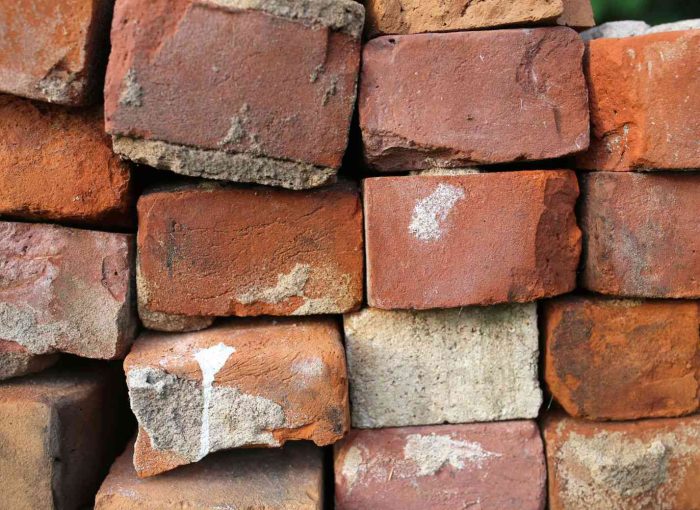G’day, DIY enthusiasts and eco-conscious builders! Ready to dive into the world of reclaimed building supplies? Whether you’re renovating a Federation-era cottage in Sydney or building a rustic retreat in the Outback, using reclaimed materials can add character, save you some dollarydoos, and help our beautiful planet. So, grab a stubby, and let’s chat about the do’s and don’ts of buying reclaimed Aussie building materials!
Why Go Reclaimed?
Before we jump into the nitty-gritty, let’s yarn about why reclaimed materials are worth considering.
I remember when my mate Johnno decided to renovate his Queenslander in Brisbane. He was dead set on using all new materials until I took him to a salvage yard. The look on his face when he saw those gorgeous old hardwood floorboards – priceless! He ended up with a stunning renovation that told a story and saved him a bundle.
Using reclaimed materials isn’t just about being a tight-arse (though saving money is a nice bonus). It’s about:
- Sustainability: Reusing materials reduces waste and demand for new resources.
- Quality: Many old materials are of higher quality than their modern counterparts.
- Character: Reclaimed materials bring history and unique aesthetics to your project.
- Supporting Local: Many salvage yards are small, local businesses.
Now, let’s get into the do’s and don’ts of buying reclaimed materials in the Land Down Under.
The Do’s of Buying Reclaimed Australian Building Materials
1. Do Your Research
Knowledge is power, mates. Before you start your reclaimed materials journey:
– Learn about different types of Australian timber. Know your Jarrah from your Blackbutt!
– Understand the era of your project. A 1920s bungalow will need different materials than a 1970s brick veneer.
– Research local salvage yards and demolition sales.
I once saw a bloke buy what he thought was reclaimed Aussie hardwood, only to find out it was cheap imported pine. Don’t be that guy!
2. Do Inspect Thoroughly
When you’re at the salvage yard:
– Check for signs of rot, especially in timber.
– Look for pest damage. Termites are a bugger in Australia!
– Test the functionality of items like doors or windows.
– Measure accurately. That “perfect” reclaimed door won’t be so perfect if it doesn’t fit!
I learned this the hard way when I bought an old clawfoot tub without checking for cracks. Let’s just say my bathroom renovation turned into an unexpected water feature!
3. Do Consider the Overall Cost
Reclaimed materials can save you money, but not always. Consider:
– Transportation costs. That bargain corrugated iron might not be such a bargain if you have to haul it from Broome to Adelaide!
– Preparation costs. Old materials often need cleaning, de-nailing, or refinishing.
– Installation costs. Some reclaimed materials are trickier to install than new ones.
My sister thought she was being clever buying reclaimed bricks for her garden path. By the time she’d cleaned them all, she reckoned it would’ve been quicker to make the bricks herself!
4. Do Build Relationships with Suppliers
– Get to know your local salvage yard owners.
– Join online groups for heritage renovators or sustainable builders
– Attend demolition sales and auctions.
I’ve got a mate at the salvage yard who gives me a bell whenever some nice old Tassie Oak comes in. It pays to be a familiar face!
5. Do Get Creative
– Think outside the box. Old ladders can become bookshelves, windows can become room dividers.
– Mix old and new. A modern kitchen with a reclaimed timber benchtop can look ace!
– Don’t be afraid to repurpose. Those old fence palings might make a ripper feature wall.
I once used an old ship’s porthole as a window in my garden shed. Weird? Maybe. But it looks grouse and always gets comments from visitors!
6. Do Check Compliance
– Ensure reclaimed materials meet current building standards.
– Check if you need any special approvals for using reclaimed materials.
– Be particularly careful with electrical items or plumbing fixtures.
A mate of mine had to rip out a beautiful reclaimed timber floor because it didn’t meet fire safety standards. Talk about a heartbreaker!
7. Do Plan for Extras
– Buy more material than you think you need. Reclaimed materials can be inconsistent, and you might need to account for waste.
– If you find something perfect, grab it! You might not see it again.
I once passed up on some gorgeous Art Deco door handles, thinking I’d find something similar later. Spoiler alert: I didn’t. Still kicking myself!
The Don’ts of Buying Reclaimed Australian Building Materials
1. Don’t Ignore Safety
– Be wary of materials that might contain asbestos. It was used in Australia until the 1980s!
– Watch out for lead paint on old timber or metal.
– Avoid materials that have been treated with harmful chemicals.
I had a close call with some old fibro sheets that turned out to contain asbestos. Not worth the risk, mates!
2. Don’t Forget to Factor in Labor
– Reclaimed materials often require more work to prepare and install.
– If you’re hiring tradies, make sure they’re experienced with reclaimed materials.
– Be realistic about your own DIY skills.
My cousin thought he’d save a packet using reclaimed timber for his deck. Three weekends and several broken saw blades later, he wished he’d just bought new wood!
3. Don’t Be Fooled by Fakes
– Some dodgy dealers try to pass off new materials as reclaimed.
– Be suspicious of large quantities of identical “reclaimed” items.
– If the price seems too good to be true, it probably is.
I once saw a pile of “reclaimed” terracotta roof tiles at a market. They looked a bit suss, so I asked the seller about their history. He spun some yarn about them coming from an old convent. Turned out they were fresh from a factory in China!
4. Don’t Overdo It
– A little bit of reclaimed material can add character. Too much can look like a junkyard.
– Consider mixing reclaimed items with new materials for balance.
– Think about the overall aesthetic you’re going for.
I visited a house where the owner had gone reclaimed-mad. Recycled this, upcycled that. It looked like a tip shop had exploded! Sometimes, less is more.
5. Don’t Forget to Check for Pests
– Old timber can harbor borers or termites.
– Check upholstered items for signs of moths or other insects.
– Be cautious about introducing pest-infested materials into your home.
A bloke I know brought home some old railway sleepers for his garden. Didn’t realize they were full of termites until half his back fence had been eaten!
6. Don’t Neglect Proper Storage
– If you’re not using the materials right away, store them properly.
– Keep timber dry and well-ventilated.
– Protect metal items from rust.
I once scored some beautiful old Tassie Oak floorboards. Left them out in the rain like a gallah, and they warped something shocking. What a waste!
7. Don’t Forget to Consider the Era
– Try to match reclaimed materials to the period of your home.
– Be mindful of mixing styles unless you’re going for an eclectic look.
– Research the history of significant items.
Where to Find Reclaimed Materials in Australia
Alright, so you’re keen to get your hands on some reclaimed treasures. Where do you look? Here are some top spots:
- Salvage Yards: Every major city has them.
- Online Marketplaces: Check out Gumtree or Facebook Marketplace. You never know what gems you might find!
- Demolition Sales: Keep an eye out for heritage buildings being demolished. You might snag some amazing period features.
- Tip Shops: Many rubbish tips have shops where you can buy salvaged items. It’s like a treasure hunt!
- Antique and Second-hand Shops: Great for smaller items like door handles, light fittings, or decorative elements.
- Rural Properties: If you’re out in the country, keep an eye out for old sheds or fences. Farmers are often happy to sell old materials.
- Online Specialty Stores: Websites like Timber Revival or The Junk Map specialize in reclaimed materials.
Remember, half the fun is in the hunt! I once found a gorgeous old fireplace surround propping open a gate on a farm. A slab of beer for the farmer, and it was mine!
The Future of Reclaimed Materials in Australia
As we become more aware of our environmental impact, the use of reclaimed materials is only going to grow. We’re seeing:
– Increased demand for sustainable building practices
– More architects specializing in designs using reclaimed materials
– Growing appreciation for the character of older materials
Who knows? In a few years, we might see entire housing estates built from reclaimed materials. The future’s looking green, mates!
Wrapping Up: Your Reclaimed Adventure Awaits!
Well, cobbers, we’ve covered a fair bit of ground! From the do’s and don’ts of buying reclaimed materials to where to find them, you’re now armed with the knowledge to start your own reclaimed adventure.
Remember, using reclaimed materials isn’t just about saving a few bucks or being trendy. It’s about preserving our history, reducing waste, and creating spaces with real character. Every piece of reclaimed material has a story, and by using it in your project, you’re adding your own chapter to that story.
So, what are you waiting for? Get out there and start hunting for those reclaimed treasures! Whether you’re after some weathered corrugated iron for a garden feature, or some century-old hardwood for your new floorboards, there’s a world of reclaimed materials just waiting to be discovered.
And hey, even if your first reclaimed project doesn’t turn out perfect, remember – those little imperfections are what give it character. As we say down under, “She’ll be right, mate!”
Happy hunting, and may your renovations be ever sustainable!

